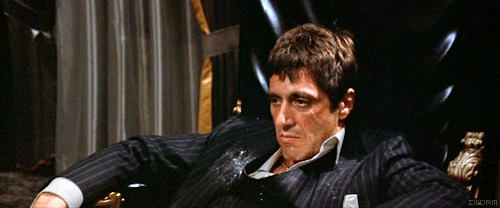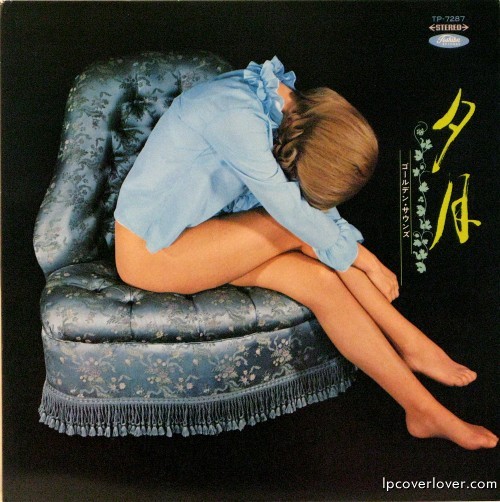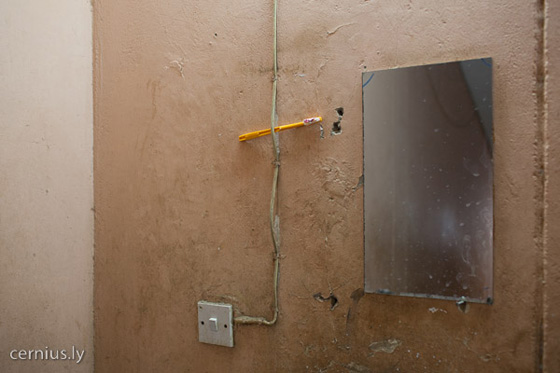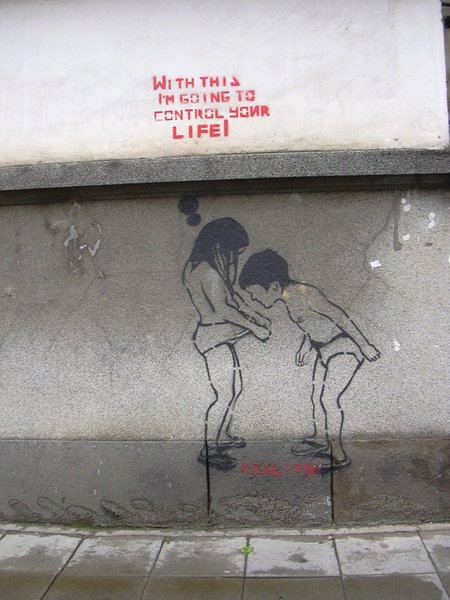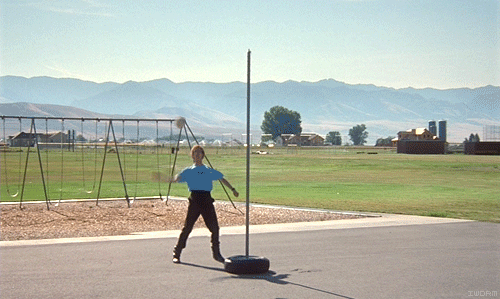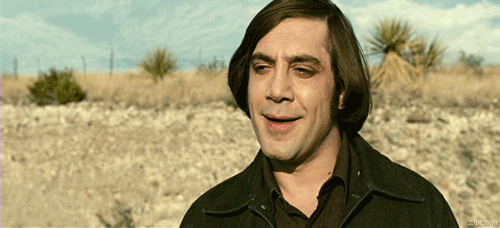sábado, 29 de enero de 2011
Annie Lennox Love song for a Vampire
jueves, 27 de enero de 2011
Scarface (1983)
martes, 25 de enero de 2011
Blood Orange - Sutphin Boulevard
¿Qué tienen en común Stalin y Guzmán el Bueno?
Siendo dos patrones o modelos de comportamientos totalmente opuestos: genocida, Stalin, y héroe abnegado, Alonso Pérez de Guzmán (Guzmán el Bueno).
En ambos casos, ante situaciones desesperadas por parte de sus hijos, actuaron igual.
De todos es conocida la leyenda de Guzmán el Bueno en la defensa de Tarifa (1294). Ante la dificultad en tomar la fortaleza por parte de los benimerines, éstos optaron por la vía rápida: capturando al hijo de don Alonso y amenazaron con matarle si no rendía la plaza. Ante la negativa de Guzmán, incluso cuenta la leyenda que ofreció su propia daga, su hijo fue asesinado pero la plaza resistió. De ahí el sobrenombre de “el Bueno“.
José Stalin fue el líder de la URSS desde mediados de los 20 hasta su muerte en 1953. Dirigió la construcción del socialismo en la URSS, que pasó de ser un país rural a una potencia industrial. En contrapartida, dirigió un régimen represivo de la población, caracterizado por la presencia de campos de trabajo y represión (gulag) y las deportaciones a Siberia. Durante la batalla de Smolensko (1941) los nazis capturaron al hijo de Stalin, Yakov. Durante un tiempo pasó como un soldado más hasta que fue reconocido y las autoridades nazis propusieron un canje por el mariscal Friedrich Paulus. Stalin se negó al intercambio alegando que su hijo no había sido capturado. Yakov murió en un campo de concentración.

Yakov en el campo nazi
En honor a la verdad, y porque me fastidia meter en un mismo post a Stalin y don Alonso, he de decir que la negativa del genocida se debió a que él no consideraba que existiesen prisioneros rusos, “sólo traidores que se habían dejado capturar“.
Imágenes: wikipedia
¿Qué tienen en común Stalin y Guzmán el Bueno? escrito por Javier Sanz en: Historias de la Historia
sábado, 22 de enero de 2011
The Holy Mountain (1973)

magritte 2

David Hammons’ Snowball Sale
Killer Last Meals
Graphic designer James Reynolds recreated the final meals of nine American prisoners executed between 1963 and 2006, then photographed each on an inmate-orange cafeteria tray.
Fastcodesign.com points out one particularly chilling choice in the series, titled Last Suppers:
Consider the meal for John Wayne Gacy aka the Killer Clown: a bucket of original-recipe Kentucky Fried Chicken (which is extra creepy because Gacy had worked for KFC and abused male employees there).
I find it rather disturbing that Reynolds aestheticized the meals so highly until they radiate an almost minimalist sheen. It is an attempt to humanize the criminal or confuse the viewer about our notions regarding good and evil? I found myself staring at each image and psychoanalyzing each prisoner, which proves to be a frustrating and futile experience.
Nine photos in this series seems to be far too little. In this case, more would be more powerful and effective as these photos — and their careful preparation — is really about voyeurism where we are being seduced by a form of food/design/crime porn.
I for one will be delighted when capital punishment is banned not only in America (one of the last Western countries to still practice it), but all around the world. When that day comes, the meaning of these photos will be very very different.
Hat tip Henry C
viernes, 21 de enero de 2011
jueves, 20 de enero de 2011
AGNOSTIC
domingo, 16 de enero de 2011
Things That Look Like Art
BLNK: Things That Look Like Art POST BY JUOZAS CERNIUS
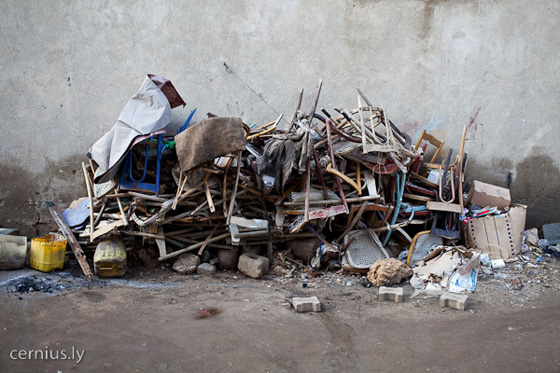

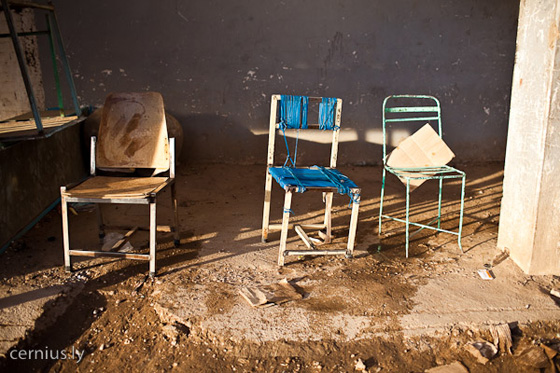


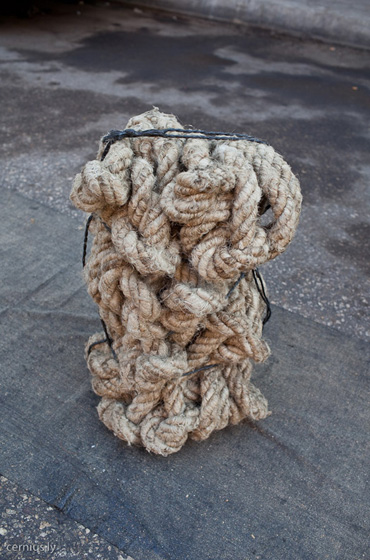
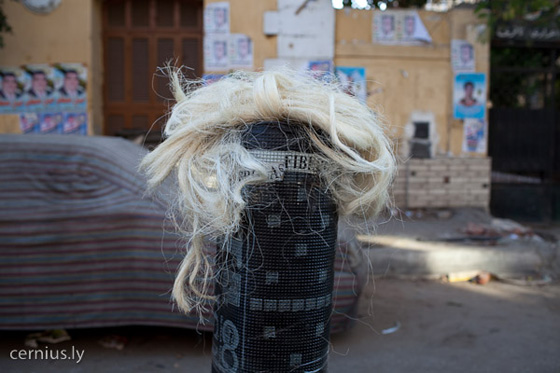

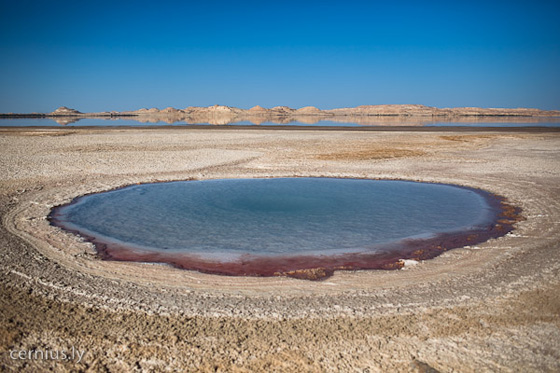

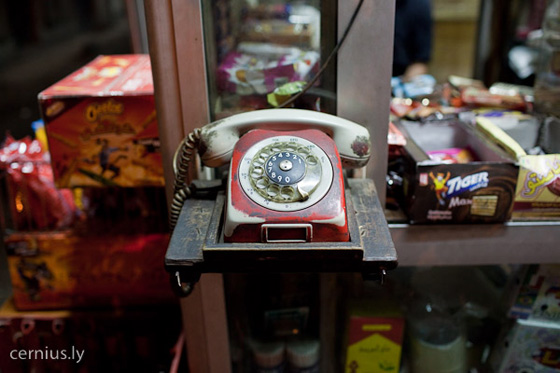




sábado, 15 de enero de 2011
deer tick -- ashamed
emmanuel negro
“Its origin and purpose are still a total...
High society
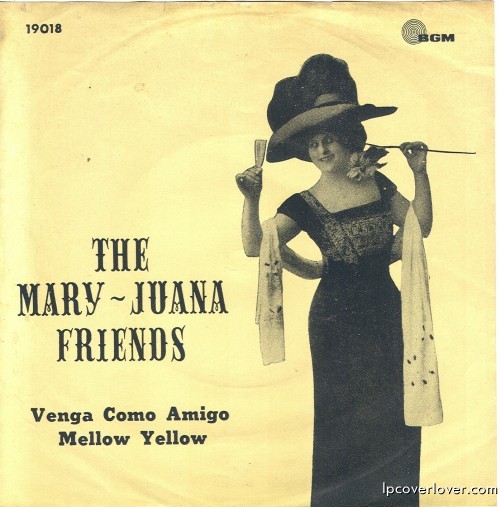
The Mary-Juana Friends “Venga Como Amigo” / “Mellow Yellow” (Argentina)
mypantsareonfire
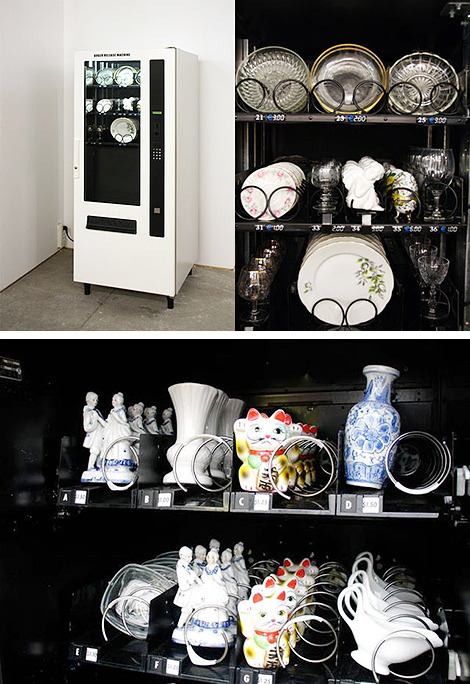
passive/aggressivness at it’s best
Insert a coin. Your selected piece of china will fall to the bottom of the vending machine. It will shatter. This project by artist Yarisa and Kublitz. If you feel better when you do it, because the designers contends that this machine will make you feel better.
Photo

viernes, 7 de enero de 2011
Napoleon Dynamite (2004)
Inoj
Bony Tony
Michael Aaron Williams
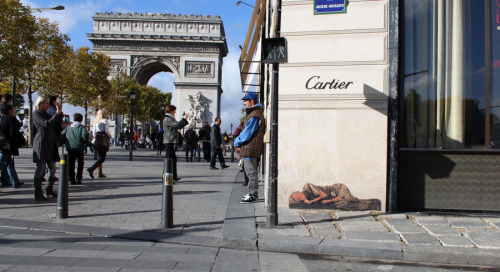
No country for old men
Salem
emmanuel perrotin - gallerist at his gallery - paris
FREE VOINA! Two Russian Art-ivists Languish in Jail

This action by the Voina group was what caused the arrest of Oleg Vortonikov and Leonid Nikolayev. They are still in jail. (all images courtesy Voina group) (click to enlarge)
The radical performance art collective, Voina, has been challenging the Russian authorities for years but on November 15 two of their artists, co-founder Oleg Vortonikov and Leonid Nikolayev, were arrested for a performance this past summer that involved the overturning of a cop car as part of an anti-corruption protest.
Even with this major set back, Voina continues to fight and they resist the efforts of the authorities to squash their artistic protests. The group has fans all around the world and even stealthy street artist Banksy is a fan and has thrown his support behind the group and pledged £80,000 in an effort to help.

Voina members, left, Leonid Nikolayev and, center, Oleg Vorotnikov are still in custody. (image via bbc.co.uk)
The internet-savvy art group began to gain notoriety in 2008 when a day before the presidential “election” that Dmitry Medvedev won by a landslide, six couples had sex in Moscow’s Biological Museum in front of a banner calling for copulation in support of “the bear cub-successor” — a pun on Medvedev’s family name, which is derived from the Russian word for bear. The imagery also riffed of a major Russian meme, Preved, that began with American artist John Lurie’s watercolor “Bear Surprise” (2006).
The group’s anarchist hijinks don’t stop there as they have orchestrated the hanging of presidential portraits in police departments stations in a mock celebration of Medvedev’s inauguration, they’ve staged anti-homophobia and anti-xenophobia faux-lynchings in malls, a performer smuggled chicken out of a supermarket using her vagina, they rigged up a table in a subway car and held a wake for absurdist poet Dmitry Prigov, and they have throw stray cats into swanky restaurants, they marked international workers’ day by throwing cats at McDonald’s restaurant staff, which they explained to Reuters, “was to help snap the workers out of the dull routine of menial labor.”
One of their most viral actions happened earlier this year when the group painted a giant phallus on a draw bridge, and, as Boing Boing noted, “Russian art group Voina ‘dicks’ a St. Petersburg Bridge.”
But since the November arrest, art-ivists Vortonikov and Nikolayev continue to languish in prison. To find out more about the situation I conducted the following email interview with Natalie Sokol, a third member who was also detained but later released, about the arrests.
Hrag Vartanian: What are the exact charges Oleg Vorotnikov and Leonid Nikolayev are facing?
Natalie Sokol: Oleg Vorotnikov and Leonid Nikolaev are facing charges under article 213 paragraph 1 item “b” of the criminal code (hooliganism motivated by hatred or hostility towards a social group). This means up to 5 years of prison sentence on each count.
HV: They were arrested in connection with the anti-corruption protest in St. Petersburg last month, correct? Does Voina consider that an art performance?
NS: Leonid and Oleg were arrested November 15th in Moscow and were then taken to St. Petersburg. They spent the trip to St. Petersburg on the floor, with hands cuffed behind their backs and with plastic bags on their heads. They were also beaten on the head and in the kidney area during the trip. Our action “The Palace Revolution” was a symbolic reform of the police which in today’s Russia is wallowing in corruption and lawlessness, systematically violating human rights and freedoms. The overturned police car symbolizes reform. Our mission as artists is to create a unique ultra modern work of art. In my opinion we succeed brilliantly. It’s evidenced by broad popular support and sympathy we receive.
HV: Can you tell us about the circumstances of the arrest and what exactly happened?
NS: At 7 AM on November 15, eight Center “E” (anti-extremism police) agents burst into the apartment we were staying in. They laid everyone (including other tenants and guests) face down on the floor and cuffed everyone’s hands behind their backs. They also claimed they had the right to use weapons. Then they started taking people to the local police station one by one. Oleg and Leonid had plastic bags placed over their heads and were then thrown into a white van that was parked right by the porch. The police then conducted a search, better described as total destruction. All items, childrens and adults alike, were thrown on the floor, dirty from the cops’ many boots. All storage media and any notes made on paper were seized. The police yanked items and toys out of the child’s hands which made him hysterical. During the search, the police unlawfully seized all my IDs and documents, which is a violation of my constitutional rights.

A performance by Voina described as follows: How to snatch chicken. The tale of how one cunt fed the whole of the group Voina. Activist of the group Voina named Vacuous Cunt With Inconceivably Huge Tits steals a chicken from a supermarket by hiding it in her vagina. At the same time The Voina Activists assisted Cunt, showing the CCTV cameras and security guards their motto. FUCK WHORING YOURSELF! declared the Voina motto. (click to enlarge)
NS: During the first week, when Oleg and Leonid didn’t have the opportunity to find defense attorneys, they were treated badly. They were being “questioned without a transcript.” When they were examined by medics 2 weeks after the arrest, Oleg was found to have hematomas over the kidney area, handcuff marks and torn clothes, while Leonid only had bruises. At this time the attorneys are visiting them regularly. Leonid and Oleg are being held in mass cells, no violence is being used against them.
HV: What does this case say about the state of art in Russia today?
NS: Today’s Russian is defined by glitzy artists who are busy whoring themselves out to those in power. The few who find the strength to oppose the lawlessness, perish. The situation around Voina constitutes an integrity test for the art community. Artists have to understand that before anything else they are citizens, and as citizens they must express their position in their art. It’s just a matter of being honest to oneself.

One of VOINA's most viral artistic efforts was this fallus they painted on a St. Petersburg draw bridge.
HV: Has Voina found any allies in Russia in their fight for greater artistic freedom?
NS: I think it’s a bit early to say anything about that. With our actions we have defined the space of the struggle. Our experience is more valuable for activists than it is for artists. Artists have to stand up for their freedom on their own, perhaps by becoming activists. They have to cast aside their conventions, their patterns, their careerism and act from their hearts.
HV: How can people around the world help fight for the release of Vorotnikov and Nikolayev?
NS: They can organize protest actions worldwide in support of our activists, demand that they be released. The arrest was unlawful and there are no reasons to keep them in detention. We must demand an unbiased investigation and trial, publicize the situation as much as possible around the world, so that the judge won’t have any other option but to act according to the law and not according to orders from above.
To learn more about Voina, visit their website. Also, Animal New York’s Marina Galperina has been covering Voina for a while and has a good archive of posts worth a look.
